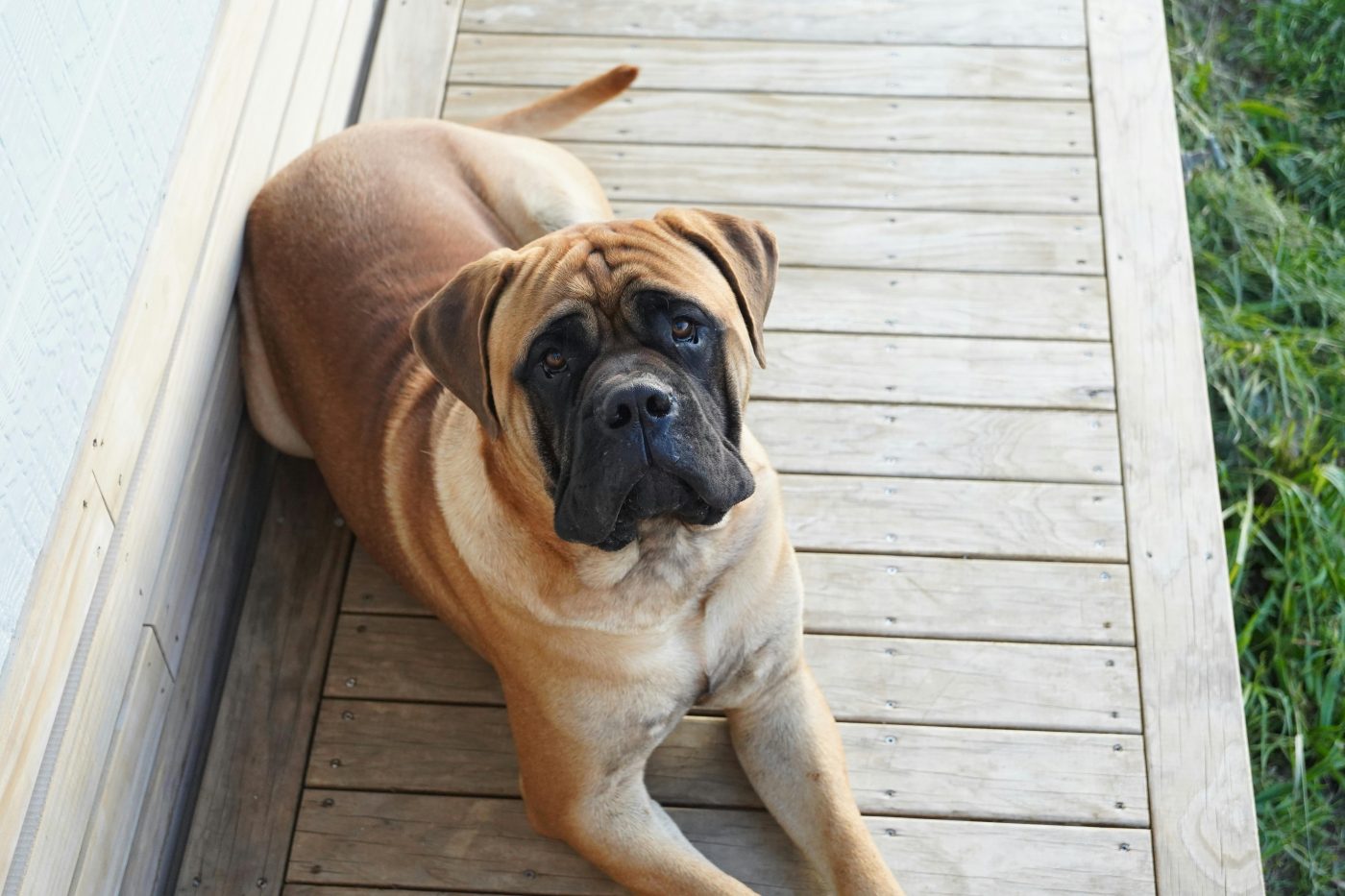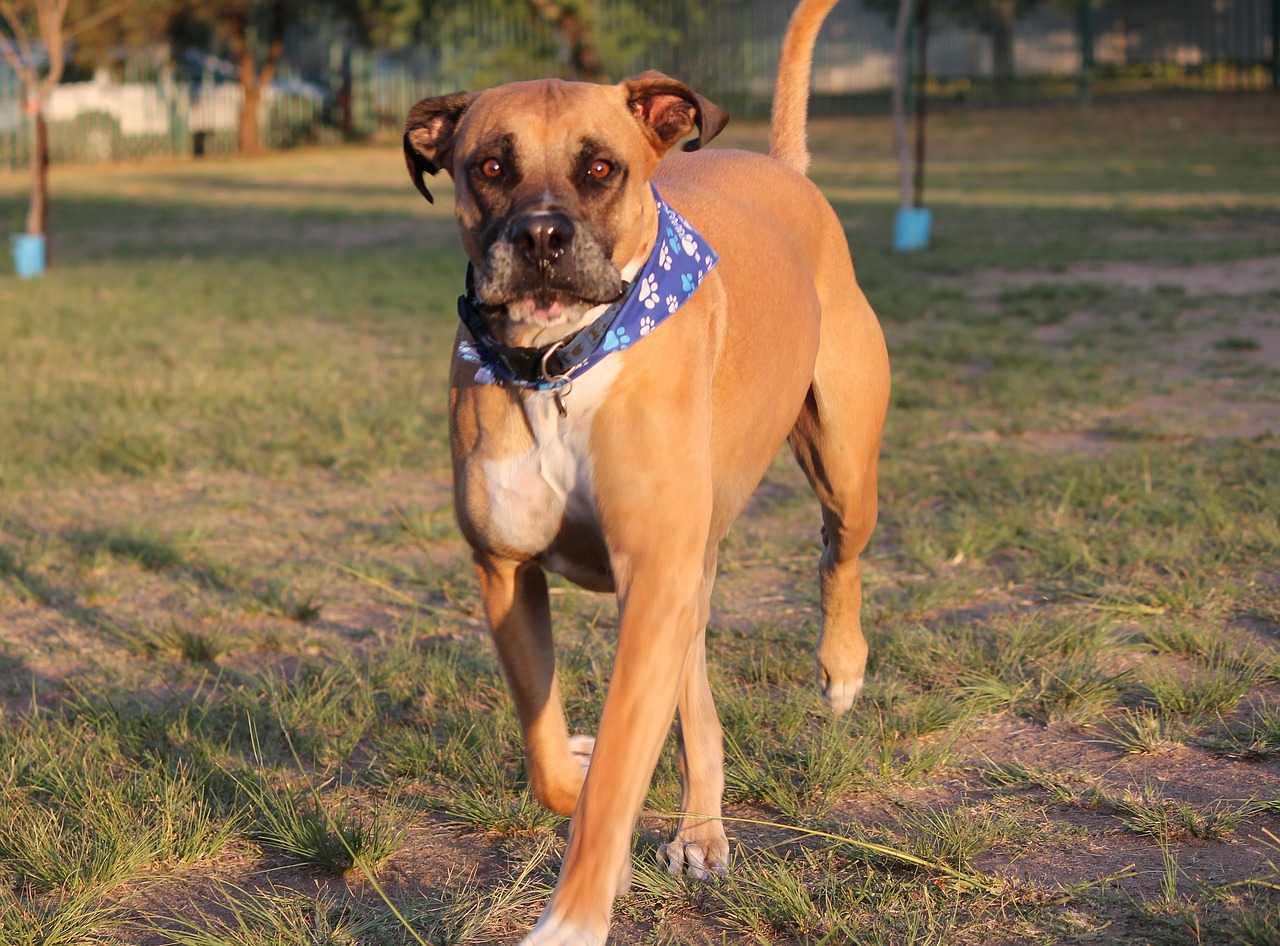The Bullmastiff is a breed that epitomizes strength, loyalty, and protective instinct, standing as a noble testament to purposeful breeding. Developed in the late 19th century in England, the Bullmastiff was bred to deter poachers on large estates and game preserves. Combining the formidable strength and size of the Mastiff with the agility and tenacity of the Bulldog, the Bullmastiff was designed to be the ultimate guardian. Unlike many breeds developed for aesthetics, the Bullmastiff was bred with a specific job in mind, leading to its unique blend of physical and temperamental traits. Today, while the breed no longer needs to chase down poachers, it serves as a devoted family companion, known for its gentle nature with loved ones and its unwavering courage when protecting its home. This article provides a comprehensive look into the history and origin of the Bullmastiff, exploring how this breed came to be a cherished protector and companion.

The Breed’s Inception
The Bullmastiff’s history begins in the late 19th century in England, where gamekeepers faced significant challenges from poachers. To combat this threat, gamekeepers sought a dog that could quietly track and overpower a man without causing serious harm. The solution was found in the crossbreeding of the Mastiff, known for its size and strength, and the Bulldog, valued for its ferocity and courage. The resulting breed was the Bullmastiff, initially referred to as the “Gamekeeper’s Night Dog.” By the early 20th century, the breed had been perfected to the point where it was consistent in type and temperament, embodying the ideal qualities sought by its creators.
Development and Recognition
As the need for a poacher’s deterrent declined, the Bullmastiff found new roles in society, from serving as a loyal family protector to assisting in military and police work. The breed’s intelligence, loyalty, and physical prowess made it adaptable to a variety of tasks beyond its original purpose. In 1924, the Bullmastiff was officially recognized by the Kennel Club in the United Kingdom, and it was later recognized by the American Kennel Club in 1933. These milestones marked the Bullmastiff’s transition from a working dog to a recognized breed, allowing it to gain popularity not only in England but around the world.
Physical Characteristics and Temperament
The Bullmastiff is a large, muscular breed, with males standing 25 to 27 inches at the shoulder and females slightly smaller. They possess a short, dense coat that comes in fawn, red, or brindle. The breed’s most distinguishing feature is its powerful build, combining strength and agility. Despite their imposing appearance, Bullmastiffs are known for their gentle and affectionate nature towards their families. They are intelligent and trainable, with a natural protective instinct that makes them excellent guardians. However, they are also known for their calm demeanor and loyalty, making them well-suited to family life.
The Bullmastiff Today
Today, the Bullmastiff is cherished as a loyal companion and effective guardian. Their adaptable nature has allowed them to fit seamlessly into family life, where they are valued for their protective instincts and affectionate temperament. While they retain the courage and strength of their ancestors, modern Bullmastiffs are also known for their gentleness, especially with children. Breed enthusiasts and clubs continue to promote the Bullmastiff’s health, temperament, and conformation through responsible breeding and training practices, ensuring that the breed remains a beloved protector and family member.
From its origins as a formidable guardian against poachers to its role as a devoted family companion, the Bullmastiff has a rich history defined by purposeful development and adaptation. The breed’s unique combination of physical strength, intelligence, and gentle temperament has made it a cherished member of many homes around the world. The Bullmastiff stands as a testament to the success of selective breeding in achieving a specific set of characteristics, proving that a dog can be both a powerful protector and a loving companion.
Frequently Asked Questions About The History of Bullmastiffs

1. What is the origin of the Bullmastiff breed?
The Bullmastiff breed originated in England in the late 19th century. It was developed by gamekeepers to assist in guarding estates and game preserves from poachers. The breed was created by crossing the Mastiff, known for its size, strength, and loyalty, with the Bulldog, valued for its courage and tenacity. This crossbreeding produced a dog that was capable of tracking quietly, approaching poachers without barking, and holding them without causing serious harm until the gamekeeper arrived. The Bullmastiff was thus known as the “Gamekeeper’s Night Dog,” a dedicated protector of property and game.
2. Why were Bullmastiffs bred?
Bullmastiffs were specifically bred to deter poachers on English estates in the late 1800s. During this time, poaching was a common and serious problem, and gamekeepers needed a dog that could help protect the land and the game from thieves. The ideal dog needed to be large and strong enough to overpower a man, yet quiet and controlled enough not to harm them seriously. The Bullmastiff was bred to fulfill these requirements, combining the strength and size of the Mastiff with the agility and courage of the Bulldog.
3. What are the defining characteristics of a Bullmastiff?
The defining characteristics of a Bullmastiff include its large, muscular build, broad skull, and short muzzle. Males typically stand 25 to 27 inches at the shoulder and weigh between 110 to 130 pounds, while females are slightly smaller. They have a short, dense coat that comes in shades of fawn, red, or brindle. Bullmastiffs are known for their powerful appearance, courage, and loyalty. Despite their formidable size, they are gentle and affectionate with their families, showcasing a protective yet calm demeanor.
4. How did the Bullmastiff get its name?
The Bullmastiff gets its name from the two breeds that were crossed to create it: the Bulldog and the Mastiff. The “Bull” part of the name comes from the Bulldog, known for its tenacity and courage, while the “mastiff” part comes from the Mastiff, known for its size, strength, and protective nature. The combination of these two breeds’ names reflects the Bullmastiff’s heritage and the qualities that the breed was intended to embody.
5. When was the Bullmastiff officially recognized as a breed?
The Bullmastiff was officially recognized as a breed in the United Kingdom by The Kennel Club in 1924. This recognition came after years of careful breeding and the establishment of breed standards that defined the Bullmastiff’s physical characteristics and temperament. The American Kennel Club (AKC) followed suit and officially recognized the Bullmastiff as a breed in 1933. These milestones marked the Bullmastiff’s transition from a working dog to a recognized breed, allowing it to gain popularity and recognition in dog shows and as a family companion.
6. What roles have Bullmastiffs played throughout history?
Throughout history, Bullmastiffs have primarily served as guardians and protectors. Their original role was to deter poachers on English estates, utilizing their strength, intelligence, and quiet demeanor to protect property. Beyond their work as “Gamekeeper’s Night Dogs,” Bullmastiffs have also served in various capacities such as police dogs, military dogs, and search and rescue dogs. In modern times, while they may no longer need to chase down poachers, Bullmastiffs continue to serve as loyal family protectors and companions, known for their gentle nature with their loved ones.
7. How do Bullmastiffs differ from Mastiffs?
Bullmastiffs and Mastiffs differ in several key areas, including size, temperament, and historical use. Bullmastiffs are generally smaller and more agile than Mastiffs, a result of their Bulldog heritage. While both breeds are known for their protective nature, Bullmastiffs were specifically bred to be silent guardians that could quietly apprehend poachers, contrasting with the Mastiff’s role as a more traditional guard dog. Temperamentally, Bullmastiffs tend to be slightly more active and alert due to the Bulldog’s influence, whereas Mastiffs are often more laid-back. Despite these differences, both breeds share a loyal and affectionate nature towards their families.
8. What health issues are Bullmastiffs prone to?
Bullmastiffs, like many large breeds, are prone to certain health issues. These include hip and elbow dysplasia, a genetic condition affecting the joints; gastric torsion, also known as bloat, which can be life-threatening if not treated promptly; and certain heart conditions such as cardiomyopathy. Bullmastiffs may also be susceptible to skin infections and allergies due to their folds and wrinkles. Regular veterinary care, a healthy diet, and proper exercise can help manage these health concerns and contribute to a Bullmastiff’s overall well-being.
9. Are Bullmastiffs good with children?
Bullmastiffs are generally good with children, especially when raised with them from a young age. They are known for their gentle, protective nature and can be incredibly patient and tolerant with kids. However, due to their large size, interactions between Bullmastiffs and very young children should always be supervised to ensure the safety of both the child and the dog. Proper socialization and training are essential in teaching Bullmastiffs how to interact safely with children and helping them understand their strengths.
10. How much exercise does a Bullmastiff need?
Bullmastiffs require moderate exercise to maintain their health and happiness. Despite their size, they do not have high energy levels and can be quite content with daily walks and some playtime in a secure area. It’s important to avoid over-exercising Bullmastiffs, especially puppies, to prevent stress on their developing joints. Regular, moderate exercise helps prevent obesity, keeps their muscles toned, and provides mental stimulation, contributing to a well-rounded and healthy dog.
11. How long do Bullmastiffs typically live?
Bullmastiffs have a typical lifespan of 8 to 10 years. While this may be shorter than some smaller breeds, providing a Bullmastiff with a healthy lifestyle, regular veterinary care, and attention to any potential health issues can help maximize their years. Factors such as genetics, diet, and exercise also play significant roles in the overall health and longevity of the breed.
12. What is the temperament of a Bullmastiff?
The temperament of a Bullmastiff is best described as loyal, gentle, and protective. Despite their formidable appearance, Bullmastiffs are known for their affectionate nature towards their families. They are calm and confident dogs that do not bark excessively but will stand their ground when they perceive a threat. Bullmastiffs are intelligent and trainable, although they can exhibit stubbornness, requiring a consistent and patient training approach. They make excellent family companions, provided they are socialized and trained from an early age.
13. How are Bullmastiffs with other pets?
Bullmastiffs can get along well with other pets, especially if they are raised together from a young age. Early socialization is key to helping Bullmastiffs learn to interact appropriately with other dogs and animals. While they generally have a calm demeanor, Bullmastiffs have a strong protective instinct that can lead to aggression if they perceive another animal as a threat to their family. Proper introductions and ongoing supervision can help ensure harmonious relationships between a Bullmastiff and other household pets.
14. What grooming needs do Bullmastiffs have?
Bullmastiffs have relatively low grooming needs due to their short coat. Regular brushing can help minimize shedding and keep their coat healthy. Bullmastiffs also require periodic nail trimming, ear cleaning, and dental care to prevent gum disease. Due to the wrinkles on their face, it’s important to regularly check and clean these areas to prevent infection. Overall, Bullmastiffs are relatively low-maintenance in terms of grooming compared to breeds with longer coats.
15. How did Bullmastiffs become recognized as a breed?
Bullmastiffs became recognized as a breed in the early 20th century. The breed was officially recognized by The Kennel Club in the UK in 1924, following efforts by breeders to standardize the breed’s characteristics and establish a breed standard. This recognition was a crucial step in distinguishing Bullmastiffs from their Mastiff and Bulldog ancestors and helped to promote the breed both in the UK and internationally. The American Kennel Club (AKC) recognized the Bullmastiff in 1933, further solidifying its status as a distinct breed and contributing to its growing popularity as a family companion and protector.
 Toledo, United States.
Toledo, United States.